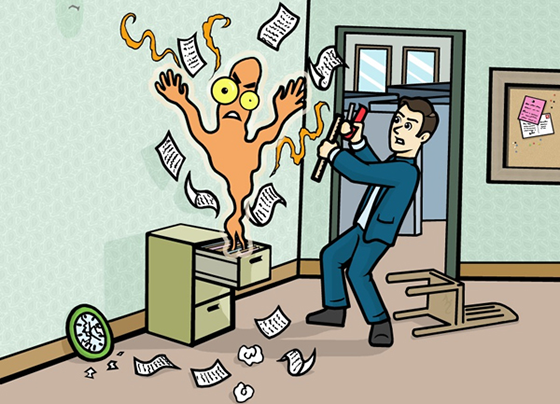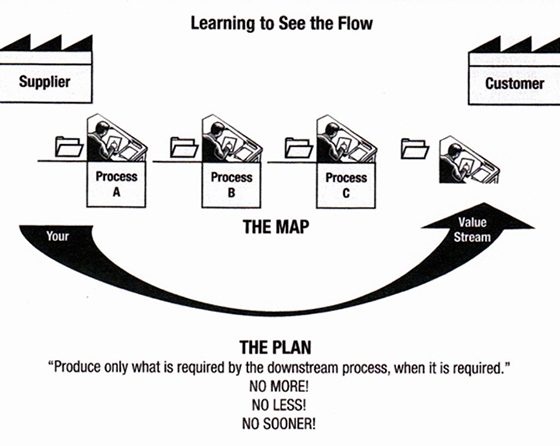
Most businesses and organisations are haunted – by entities called skuamorphs.
Skuamorphs come in two forms. The first is practices which continue to exist long after the reasons for introducing them have long since passed into obscurity. The second is beliefs and opinions without any substantive basis, but firmly held by senior management despite conflicting data. Skuamorphs do a lot of damage by creating a fog of confusion which hides opportunities and risks, whilst generating a false sense of security. Heading towards disaster chanting “but we’ve always done it this way” rarely works.
Traditional exorcists use incantations and potions to drive away evil spirits. The business exorcist has a much more powerful weapon called Lean Management. But the skuamorphs do not give up that easily. Whilst most managers have heard of lean manufacturing and can readily see how it applies to the operational staff they manage, few seem to recognise that equally, or even more importantly, the same principles to themselves!
The “lean” concept argues that you can increase your net profit without increasing your selling prices by reducing your overheads, and you reduce your overheads by eliminating waste wherever possible.
The first step towards eliminating waste, especially in management and administration systems, is being able to recognise waste for what it is. Lean Management categorises waste into seven different types.
The Waste of Overproducing
Producing too much of something, or producing it before it is needed, is waste. In the management and administrative environments, this is likely to be paper, reports and data. Producing more than is needed or producing it too soon, does not improve efficiency. It consumes resources such as materials, people and storage faster than is necessary and brings about other types of waste.
The Waste of Waiting
Waiting for anything – decisions, people, machines, information etc – is a waste. Waiting means idle time, and that causes the workflow to stop. It adds no value to the work unit or service, and the customer certainly does not want to pay for it. The waste of waiting is the easiest to detect. It is also the most aggravating to employees. There are many examples in the office: waiting for decisions or signatures, waiting for telephone calls, waiting for supplies.
The Waste of Inventory
Excess stock of anything is waste. Excess inventory takes up space, may impact safety and can become obsolete if work requirements change. Unneeded files, extra supplies and unnecessary copies are some types of inventory waste. The waste of inventory can be a departmental or an individual matter. How many pads of post-its do you squirrel away in your desk? The waste of inventory is a habit that may be difficult to break. Extra inventory represents a margin of safety that we might be strongly reluctant to break. Lean management means changing that mind-set.
The Waste of Motion
Any motion that is not necessary to the successful completion of an operation is waste. All unnecessary work movements are a form of waste. All motion should add value to the work unit or service for the customer. Ineffective job processes and layout are often responsible for creating more walking, reaching or bending than is necessary. The waste of time away from the job to travel to and attend unnecessary meetings can be significant.
The Waste of Correction
Waste arising from producing work containing errors that then needs correcting is clearly waste. Having to correct something is also waste. This waste also includes productivity losses associated with disrupting normal processes to deal with the errors. The waste of correction is much easier to spot than many other forms of waste.
The Waste of Transport
Transporting something farther than necessary or temporarily locating, filing, stocking, stacking or moving materials, people, information or paper, wastes time and energy. Materials and supplies are often moved several times before reaching a permanent location. All of this movement is waste. In addition, things in temporary locations are more likely to be lost, broken, stolen or become an obstruction.

Probably the most effective tool in the business exorcist’s armoury is Value Stream Mapping. This is a team exercise which, under the guidance of an experienced facilitator, can map out every stage in a process and identify which add value, which are essential for compliance and which are waste that can be eliminated.
Once people understand waste and where to find it, the logic behind Lean Management becomes clearer. Lean Management can be used to slash waste and increase value added work.
For further information, download our free Lean Management guide here.


